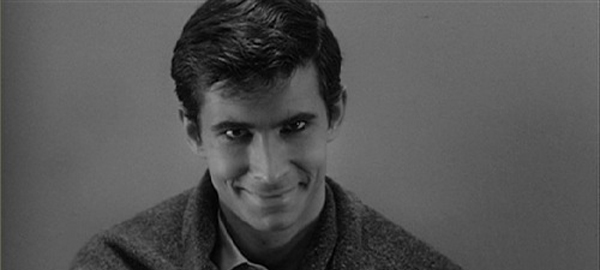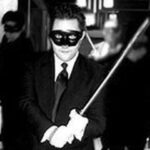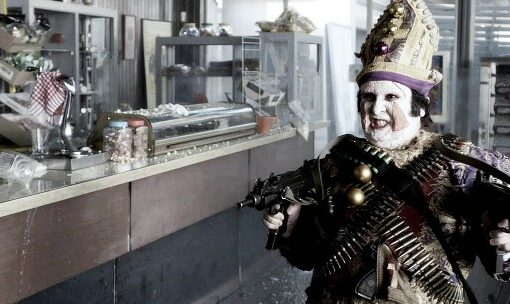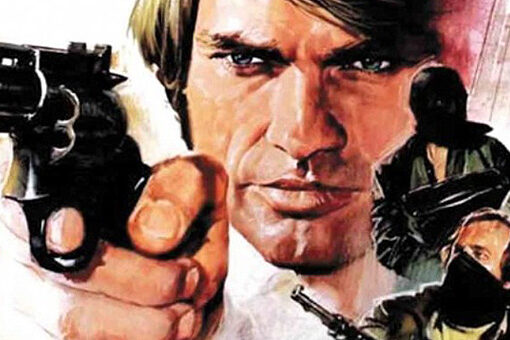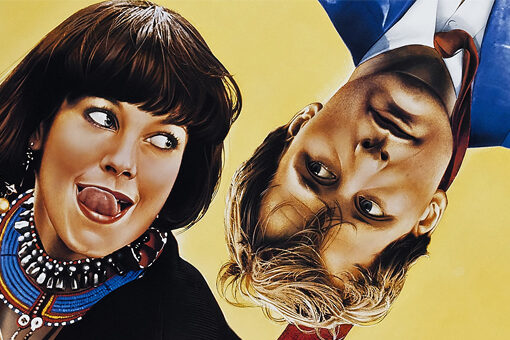PSYCHO (1960, Dir: Alfred Hitchcock)
When the “Master of Suspense” set out to make this movie it was to be a modest, low budget thriller shot by the crew of his popular TV show Alfred Hitchcock Presents. As with almost all of his projects, it soon became something much more cinematically powerful and resonant. Psycho was based on the book of the same title by author Robert Bloch (which also inspired The Texas Chainsaw Massacre), about the true story of Ed Gein, a Midwest murderer/grave robber. Incidentally, Gein actually lived not far from Bloch himself.
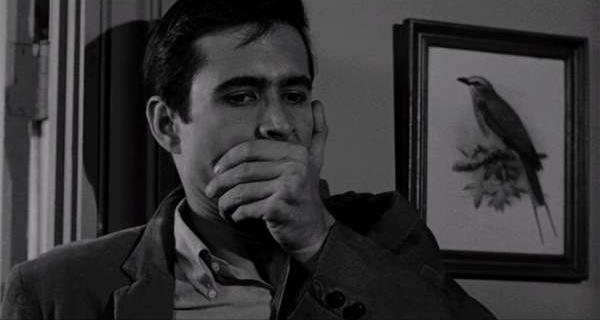
In 1960, movie audiences certainly weren’t ready to see the kind of grisly subject matter found in the book depicted onscreen. Instead Hitchcock made a more viewer friendly version that relied on psychological thrills.
Marion Crane (Janet Leigh), an office secretary in Phoenix, Arizona is given $40,000 by her boss to deposit in the bank. She decides to steal it and take off to her boyfriend Sam’s place in California. As she drives along, her mind races and she becomes paranoid about what she’s going to do. Feeling too tired to keep driving, she stops to sleep and the next day she’s awakened by a police officer who inquires if she’s ok. Marion is very worried about being caught and does her best to assure him nothing is wrong. Her next move is to buy a new car so she can’t be traced, but the police officer follows and watches her make the transaction. After putting the rush on the car salesman, she is finally able to get away from the nosey cop.
During the drive through California, she gets caught in a downpour so she stops for the night at a small motel in the town of Fairvale where she is greeted by the owner, a happy go lucky guy named Norman Bates (Anthony Perkins). Seeing she’s soaked and tired, he invites her into his motel office parlor to dry off and have something to eat. Norman comes across as a jovial fellow but is also sort of awkward and introverted. His hobby is taxidermy, or stuffing animals (a subtle reference to Gein) and his subjects (birds) are mounted around his office. He explains in detail why he enjoys it to Marion and they then talk about his invalid mother who he takes care of.
Marion is given a key to Cabin 1 where she settles in and gets ready to take a hot shower. Meanwhile, Norman secretly watches her undress through a peephole in the office wall next door. As Marion washes herself, a shadowy figure suddenly appears in the bathroom and the curtain is yanked open. Hitchcock uses very rapid editing, (77 inserted shots and 50 cuts in total) as the horrific attack occurs. The blood continuously hits the water and dissolves (chocolate syrup was used because it showed up nicely in black and white). Marion collapses and we slowly dolly back from her blank, staring eye. We hear the water flow down the drain simultaneously as the life leaves her body.
When Norman discovers his mother is the culprit behind the murder he panicks and does his best to cover the bloody scene up to protect her. Like clockwork, different people come looking for Marion, including a private investigator (Martin Balsam) and then her sister Lila (Vera Miles) and fiancee Sam. As they prod Norman and try to get to the bottom of her dissapearance, Norman’s mother kills anyone who tries to hurt them.
Psycho was yet another movie which showed the genius of Hitchcock’s pioneering cinematic visual language. The kinds of plot tropes and themes he used were new at the time but have been re-interpreted and are still a big part of horror cinema today. Psycho, which was practically a B-movie shot with a television crew, has spawned so many copies over the decades and is now considered to be “the godfather of the slasher movie”. It has also become a main example in supporting Eisenstein’s theory that “cinema is violence”. Years before people were scared to go in the water because of Jaws, they’d been scared to not take showers because of Psycho!
Composer Bernard Herrmann’s magnificent score completely set the tone for the movie with it’s shrieking string orchestration which increases the tension from the opening credits on. This memorable piece of movie music has become instantly recognizable to people all over.
TOUCH OF EVIL CONNECTION
Before making Psycho, Hitchcock was highly impressed with Orson Welle’s film noir mystery he wanted to try to best him with his own extravagant opening tracking shot. Both movies are black and white, set in the Southwest and deal with cover ups and murder. There is also an interesting similarity between the hotels featured in both films which are run by two managers that are equally strange (Dennis Weaver actually plays an outright nutcase in Touch of Evil). Yet another connection is the fact Janet Leigh appears in both movies.
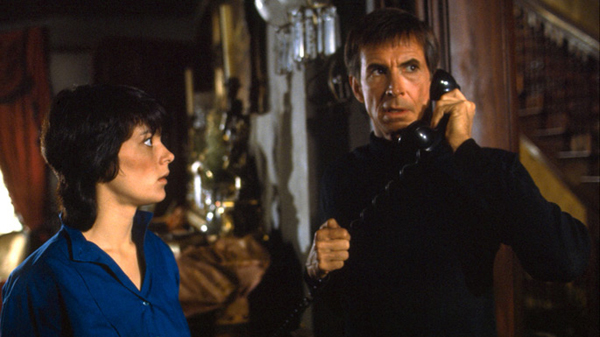
PSYCHO II (1983, Dir: Richard Franklin)
The first sequel was directed by one of Hitchcock’s students and friends: Richard Franklin. The Australian filmmaker had previously made Patrick (1978) and Road Games (1981) two thrillers that were themselves in the tradition of Psycho. The film picks up 20 some odd years after Norman was committed and he has been given permission to re-enter society, now found to be clinically sane. At the court hearing, only one person objects to his release: Lila Loomis (Vera Miles) who still seeks revenge for Norman murdering her sister Marion. Norman’s doctor Bill Raymond (Robert Loggia) assures Lila that Norman is stable but she doesn’t care and plans on fighting the system any way she can…
When Norman arrives back at the Bates Motel, he is immediately nervous about what could happen if he somehow slips into insanity once again. He gets a job at the local diner nearby where he hopes to get into a normal lifestyle. It’s there he meets a young waitress named *Mary Samuels (Meg Tilly) who he discovers has no place to live due to a breakup with her boyfriend. Norman, the kind hearted soul, invites her to stay at his home until she can get back on her feet and she accepts the offer.
Since Norman’s incarceration, the motel has been run by different people with the latest proprietor being Warren Toomey (Dennis Franz) a cranky neer-do-well. When Norman finds Toomey has turned the motel into a wild party spot he immediately fires him, causing Toomey to seek his own vengeance on Bates who he calls a “loony”.
Soon after Mary befriends him and Toomey is let go, Norman begins receiving written messages from his long dead mother and strange things begin occurring in his home that slowly pull him back into his mental disorder. Although he tries with all his might to ignore “mother’s” orders, it’s apparent, she once again has the upper hand. This movie further portrays Norman as a victim himself, someone who always wants to do the right thing but is thwarted at every turn.
Richard Franklin’s personal take on the continuing Psycho story turned out to be very entertaining and an expertly crafted sequel that almost rivals the original. The way Norman is systematically forced from all sides back into his fragmented psychological state is really the main focus. Franklin also injected this film with more moments of humor (light and dark) and added many lines and scenes that are genuinely comical in a Hitchcockian style.
By 1983 when this film was released, the slasher genre was in full swing, so it fit in especially well while providing audiences with more cerebral twists as opposed to the popular ‘hack em up’ gory versions of the day.
*Mary Samuels was a homage to Marion Crane’s fake name choice: Marie Samuels in Psycho (1960).
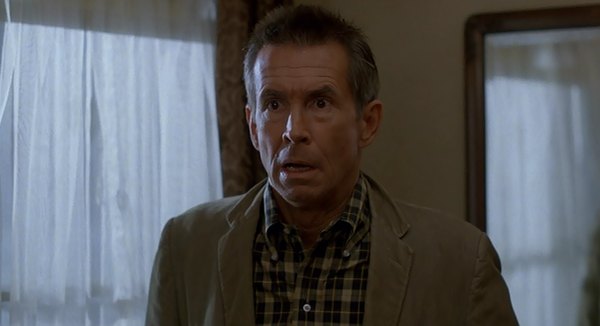
PSYCHO III (1986, Dir: Anthony Perkins)
In the 2nd sequel directed by star Anthony Perkins he chose to open the story with a sequence inspired by another of Hitch’s most popular and critically acclaimed films: Vertigo (1958).
Sister Maureen Coyle (Diana Scarwid) has become disallusioned with God and decides to commit suicide by jumping from a church bell tower. When her fellow nuns try to stop her, one of them accidentally falls to her death. Filled with shame and guilt because of the accident, Maureen flees from the convent. While aimlessly walking along the hot desert highway, a rock ‘n roll rebel named Duane Duke (Jeff Fahey) picks her up and gives her a ride. These are two people at the complete opposite ends of the personality spectrum which adds an immediate humor and tension to the situation. The nighttime brings a rain storm so Duane decides to pull over so they can get some rest and not get in an accident. While Maureen sleeps, Duane shines a flashlight on her to check out her bodily dimensions. When she awakes startled, he tries to rape her so she jumps out of the car in defiance. Duane being the nice guy just tosses her suitcase in a nearby puddle, yells at her and takes off.
We are then re-introduced to the ominous setting of The Bates Motel and its infamous owner Norman (Anthony Perkins) who has been getting along fine living with the corpse of his real mother Emma Spool (introduced in the 2nd film) and stuffing his birds.
When Norman visits the local diner, a journalist Tracy Venable (Roberta Maxwell) who is doing a story on serial killers being let back into society, tries to talk to him, knowing his history. Norman does his best to be upfront and honest about his feelings on the subject. When Maureen enters the diner, Norman is sent into a panic after he notices the initials on her suitcase read “M.C.”. He quickly leaves because of this.
Later on, Duane, needing money to get to L.A. arrives at the motel looking for work and Norman gives him Toomey’s old job which is comical because Duane is actually just as untrustworthy. When Maureen arrives at the motel she is shocked to find Duane there but he apologizes and assures her he means her no harm. Norman immediately gets orders from his mother to remove the slut from sight or she will do it herself. When “Mother” makes her initial shower attack on Maureen, she finds the young woman bleeding from another suicide attempt. Seeing this instantly turns Norman back to his regular self. In another strange twist, Maureen who has become delusional and weak from blood loss sees “Mother” as a vision of the Virgin Mary.
Norman gets Maureen to the hospital and takes care of her while trying to ignore his mother’s wishes to kill her off. The ongoing relationship Norman has with Maureen is actually the closest he ever comes to a real love affair. In Maureen he finds a kind of peace and another person to protect. When she later decides to leave him and live with a priest, unsure of what she wants to do with her life, “Mother” begins murdering unsuspecting vacationers at the motel.
Anthony Perkins’ installment of the series gave the tale of Norman Bates, (a character he helped create) yet another alternate spin on the psychologically twisted storyline. The element of religion and the innocence of Maureen (a virginal character) also comments on the Final Girl theory that is an integral part of the 80s slasher genre. While it’s not quite as smartly crafted as the previous movie, it’s still a well made, enjoyable thriller.
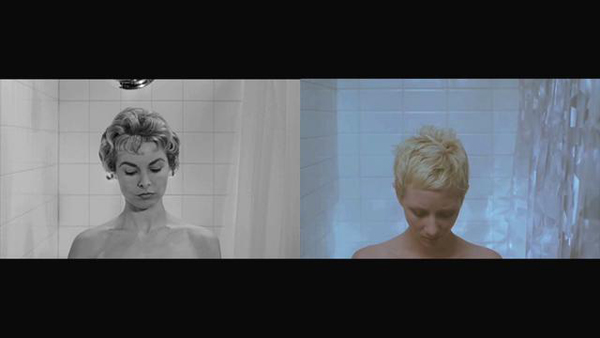
PSYCHO (1998, Dir: Gus Van Sant)
Director Gus Van Sant’s modern retelling of Hitchcock’s original which starred Vince Vaughn as Norman and Anne Heche as Marion was widely regarded as a failure upon its release. It is basically a shot for shot copy of Hitchcock’s masterpiece but with added explicit scenes (such as Norman masturbating while watching Marion) as well as avant garde dream imagery inserted during the different murder sequences. Two sequences that were redone with varying results were the opening tracking shot, which was made even better with its slow, seemless movement from the sky directly into the hotel room’s bed (thanks to CGI no doubt). The other was the famous shower sequence which Van Sant couldn’t quite re-create closely enough, which made it seem somewhat subdued. I will say that if Psycho ’98 is viewed purely as a homage/experiment/re-evaluation of the genius of Hitchcock’s cinema style, I’d still recommend it to fans.
FINAL EVALUATION
Due to Psycho’s popularity and impact on the international public consciousness, Norman Bates became one of the most recognized horror icons in film history. Although unlike the slasher film archetypes such as Leatherface, Jason, Michael Myers and Freddy, he was not an inherantly evil monster. As the films prove, Norman is actually very easy to empathize with as a person/character because he’s always been shown to be the victim of something he cannot control. Throughout the series, Norman consistently does his best to reason with and battle the evil trying to overtake him but fails again and again. This is what set him apart from most of the other killers in movies and made him special. Psycho and its first two sequels in particular are very reliable genre films that have endured so well mainly because they are, at their core, stories about a flawed human being that provide audiences with much more than just scares.

